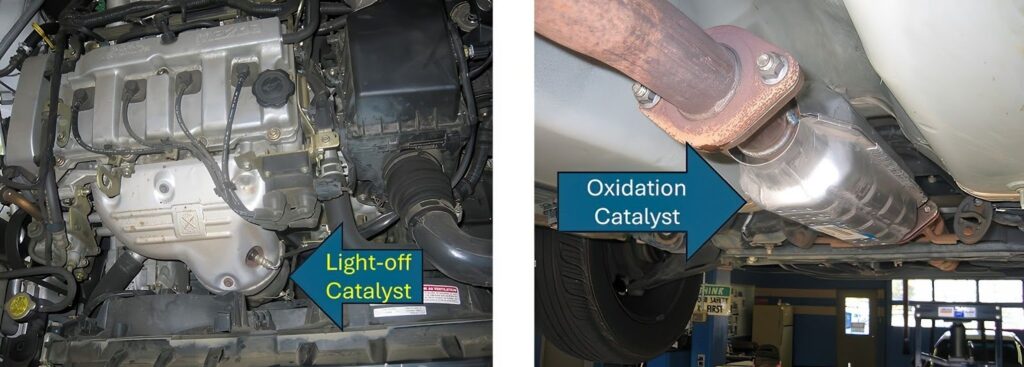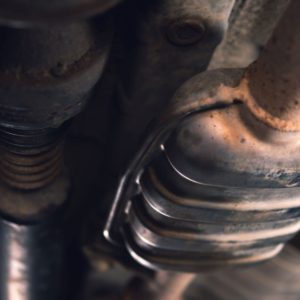A catalytic converter often looks like a cylindrical metal container with a metal pipe sticking out of each end and will usually include a heat shield. It looks like a muffler with a pipe on both ends.
From the inside, the catalytic converter has a honeycomb-like structure that’s coated with precious metals like palladium, rhodium, and platinum, which help convert exhaust emissions into less harmful substances.

Tips On How to Access the Catalytic Converter
The catalytic converter sits between the engine and muffler, so you’ll need to raise your vehicle to get a better view.
If you’re planning to remove your old catalytic converter, make sure that the engine has cooled down completely. Note that, in many cases, the catalytic converter is part of the exhaust system and it may be difficult to remove, so don’t get in over your head if you haven’t done a lot of wrench work.
Catalytic converters are often attached to the vehicle using bolts, which you can loosen with the help of penetrating oil and a trusty wrench.
Also, make sure to remove the rear bolts first before the ones in front.
Any information provided on this Website is for informational purposes only and is not intended to replace consultation with a professional mechanic. The accuracy and timeliness of the information may change from the time of publication.
































